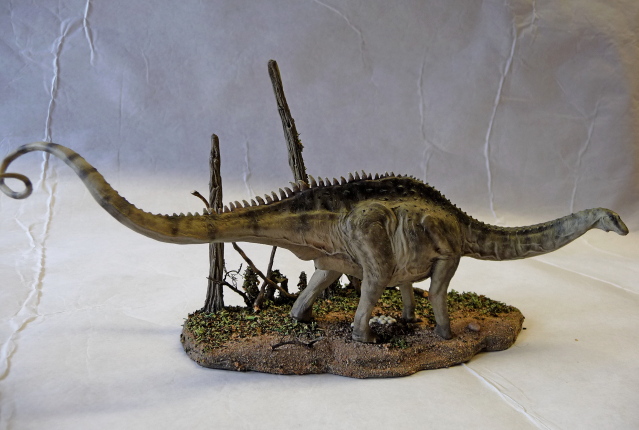
Apatosaurus has come a long way over the years. What was once a sluggish swamp-dwelling behemoth is now more tightly built, with muscular columns of legs supporting a powerful body, graceful neck, and elegant whip-like tail. As the rest of the world struggles to keep pace with the latest paleontological research, David Krentz is always perched on the cutting edge.
Read more

Review by Niroot ‘Himmapaan’ Puttapipat
The first reader to name more than three good hypsilophodontid figures gets a bean bun.
The scarcity of this family of dinosaurs in toy and model form is still a puzzle to me and something I’d long lamented.
Read more

Review by Patrick Krol
Since I started collecting dinosaur figures I wanted to have dinosaur eggs in my collection, but couldn’t find a good one anywhere. Then, when I discovered about the foreign museum lines through internet, I found out that Safari had done some hatchling dinosaurs and they were soon in my “things to buy” list.
Read more
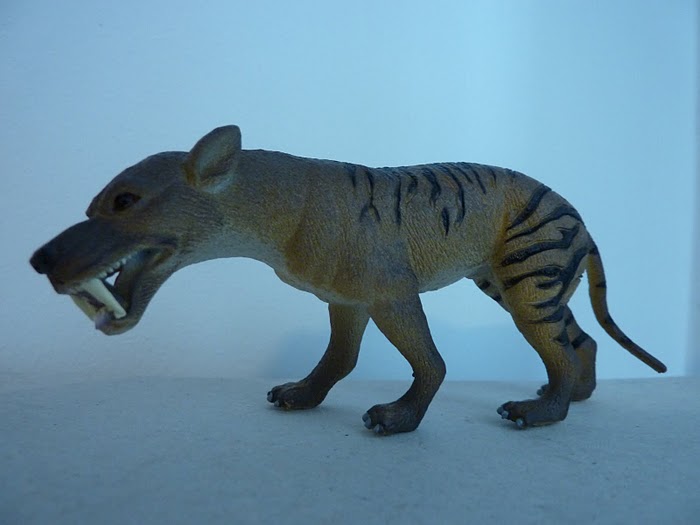
Review and photos by Mihnea (Wildheart)
Existing for approximately 26 million years, Hyaenodonts were some of the largest predators of the Late Eocene and Early Miocene epochs. Their name comes from the sharp hyena-like teeth used to tear apart possible prey. The skulls of these animals were huge and well equipped for hunting, but their brains were quite small, something typical in primitive carnivorous mammals.
Read more
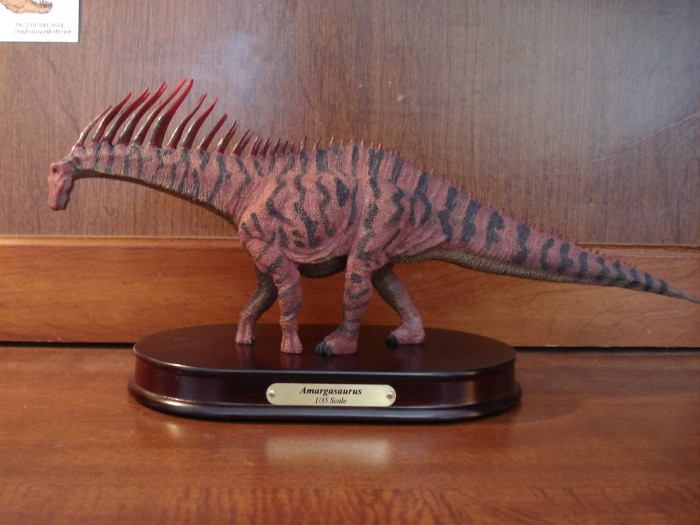
Most sauropods tend to more or less look similar; big body, long neck long tail. Rarely will a sauropod possess any distinguishing characteristics beyond those three things. Then there is Amargasaurus. This dinosaur was a smaller (relatively speaking) sauropod from the early Cretaceous in what is now Argentina.
Read more
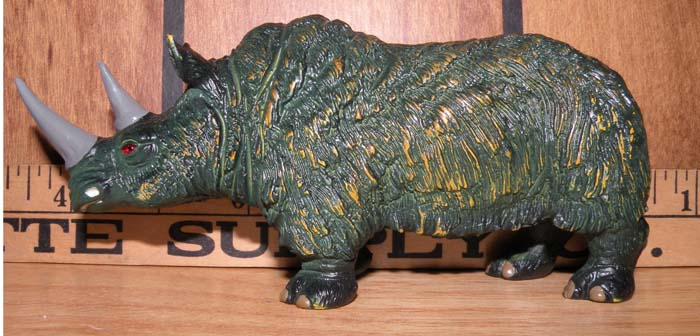
Everyone familiar with Pleistocene fauna is familiar with the woolly rhinoceros (Coelodonta antiquitatis), a large shaggy rhino that lived in Eurasia and died out at the end of the Ice Age. It is often reproduced in toy form, only less so that the more popular mammoths and Smilodon.
Read more
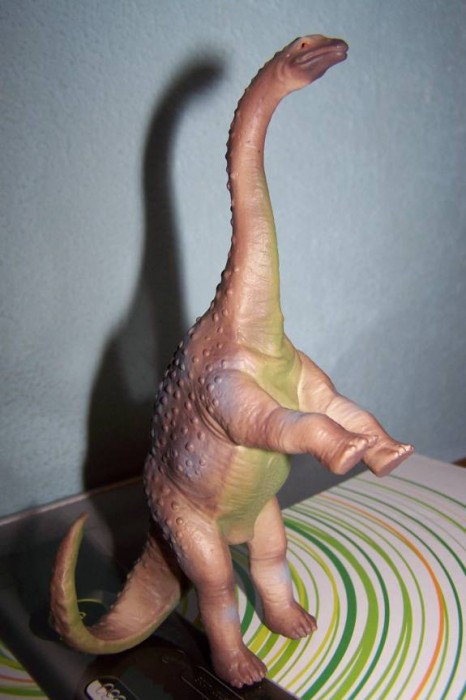
Review by Nathan, edited by Plesiosauria.
Rhoetosaurus brownei was an Australian sauropod that lived around the mid-Jurassic Period and is one of the oldest known sauropods. Little evidence has been found for this dinosaur, only a partial hind leg, some vertebrae, ribs, and pelvic elements are known, yet CollectA decided to release one as part of their standard collection back in 2009.
Read more
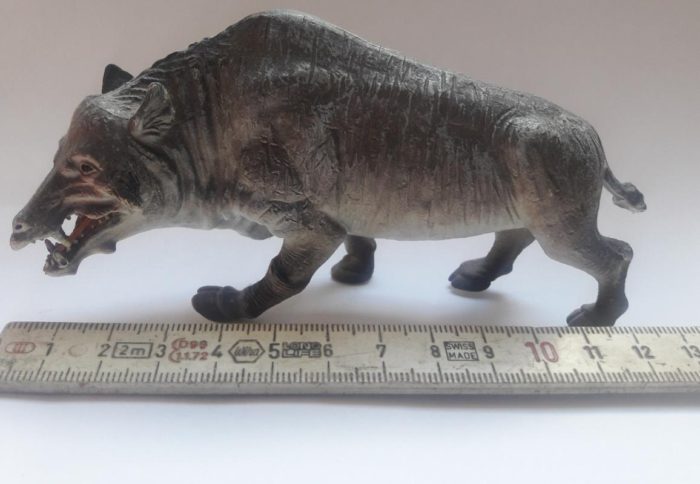
Admittedly, there were lovelier animals to have walked the earth in prehistoric times than entelodonts, omnivorous beasts that were two metres tall and four metres long. Entelodonts were especially abundant in what are now Mongolia, China and Northern America and strolled through the landscape searching for any kind of food in the Eocene epoch – mainly probably carrion.
Read more

Review and photos by Patrick Bate. Edited by Plesiosauria.
Styracosaurus was a centrosaurine ceratopsian from Cretaceous North America. Its unique and formidable horn arrangement have made it perhaps the second-most popular toy ceratopsian, behind Triceratops. This effort by X-Plus is one of two dinosaurs from their (retired) Prehistoric Masterpiece collection.
Read more
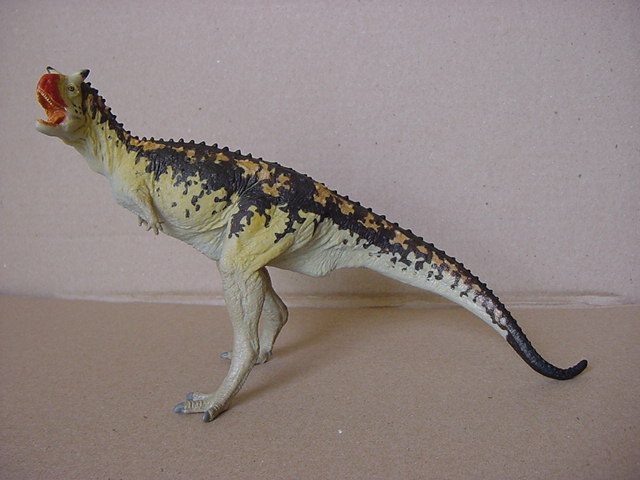
The year was 1985. When the world was first introduced to Carnotaurus sastrei, the stock market went wild, the streets were flooded with panicked mobs, and the skies became saturated with an eerie purple tinge.
Alright, maybe that isn’t entirely true. The first big break for our brow-horned friend probably came in Crichton’s bestselling sequel to Jurassic Park, The Lost World, where Carnotaurus prowled the darkness with chameleonic camouflage (speculative, naturally).
Read more
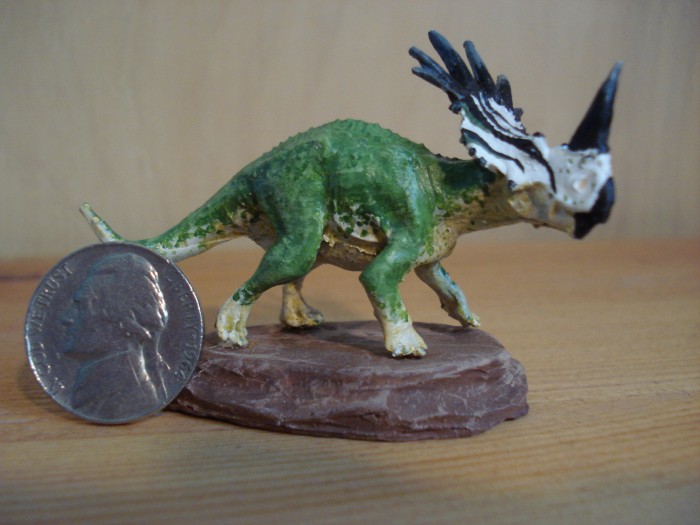
I really do like Styracosaurus very much. So much, in fact, that I decided to break my long absence from writing reviews with yet another rendition of this lovely spiked ceratopsid. Today we will be looking at David Krentz’s sculpt from his Antediluvia line.
Read more

I know I’ve said it before, but Collecta really have upped their game this year, spurred on by what seems like a genuine urge to please us geeks. It’s much appreciated, as it’d be easy for a company to not give a stuff about accuracy/aesthetics as long as the products were selling (they ARE toys, after all).
Read more















